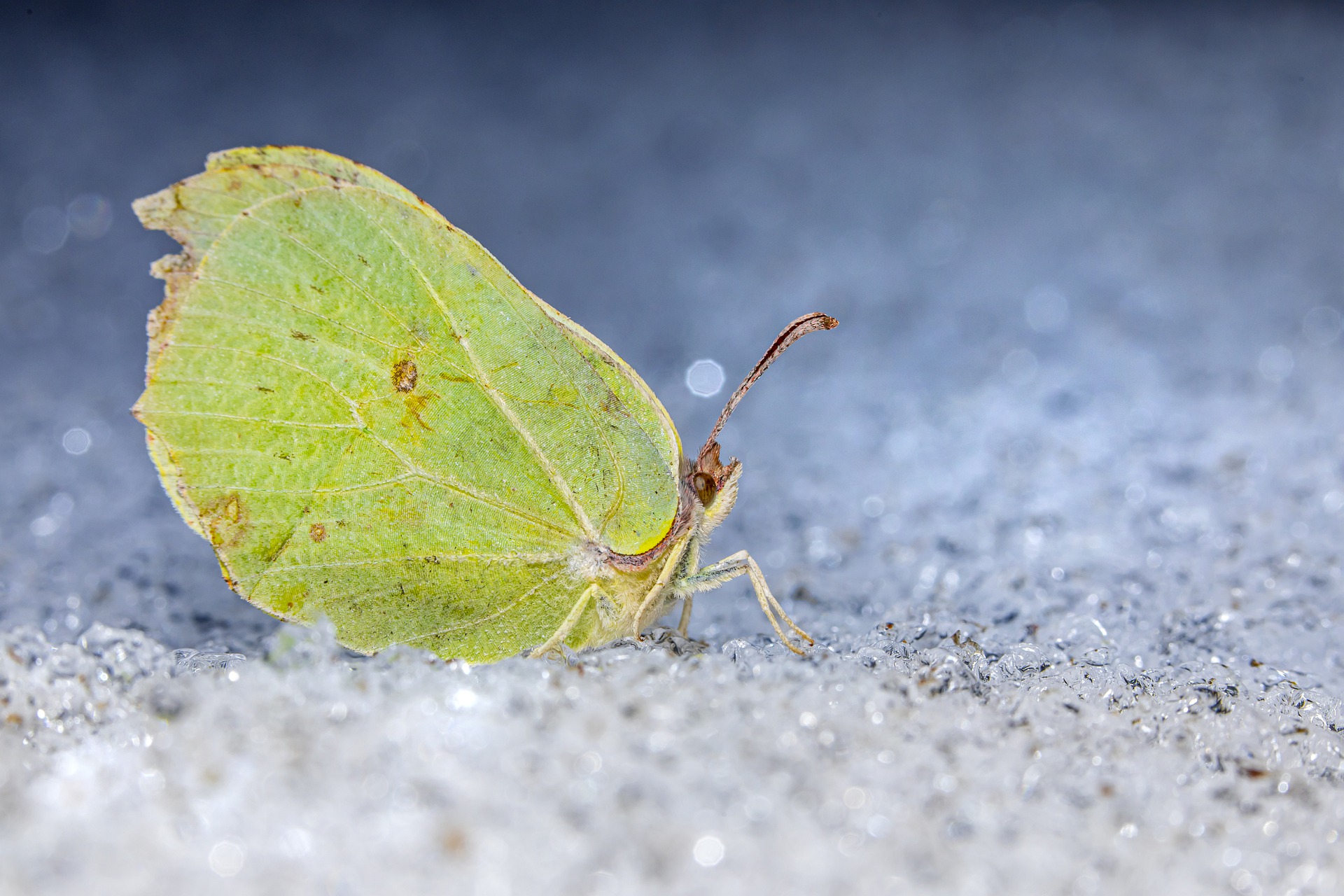The Common Brimstone (Gonepteryx rhamni) is a species of butterfly belonging to the family Pieridae. Here’s a detailed description:
- Appearance: The Common Brimstone is a medium-sized butterfly with a wingspan ranging from 50 to 60 millimeters. It has a distinctive pale yellow or sulfur-yellow coloration, which is characteristic of both males and females. The wings of males often have a slight greenish tint, particularly when viewed from certain angles. The underside of the wings is typically a paler yellow or whitish color, providing camouflage when the butterfly rests with its wings closed.
- Habitat: Common Brimstones are commonly found in a variety of habitats, including woodlands, meadows, gardens, and hedgerows. They have a preference for areas with abundant flowering plants, especially those belonging to the buckthorn family (Rhamnaceae), which serve as larval host plants.
- Range: This butterfly species is native to Europe, including the British Isles, and extends eastward into parts of Asia. It is widespread within its range and can be found in suitable habitats across different countries.
- Behavior: Common Brimstones are diurnal and can often be seen flying in sunny weather. They are strong fliers and have a distinctive gliding flight pattern. Adults feed primarily on the nectar of flowers, using their long proboscis to reach deep into the floral tubes. Males are territorial and will patrol their territory to seek out females.
- Life Cycle: The Common Brimstone undergoes a complete metamorphosis, progressing through egg, larva (caterpillar), pupa (chrysalis), and adult stages. The caterpillars feed on the leaves of buckthorn plants, while the adults primarily feed on flower nectar.
- Conservation: While the Common Brimstone is not considered globally threatened, it may face localized threats due to habitat loss, pesticide use, and changes in land use. Conservation efforts aimed at preserving and restoring butterfly-friendly habitats, including the planting of nectar-rich flowers and maintaining suitable larval host plants, can benefit not only the Common Brimstone but also other butterfly species.
The Common Brimstone is admired by enthusiasts and researchers for its vibrant coloration, graceful flight, and ecological importance as a pollinator. Understanding its habitat requirements and conservation needs is essential for ensuring its long-term survival.
Views: 18
Subscribe to the newsletter:
